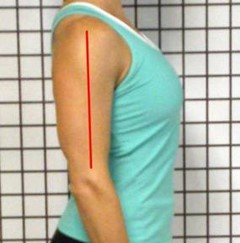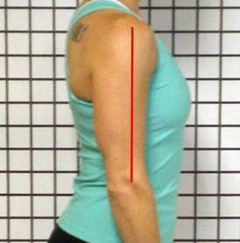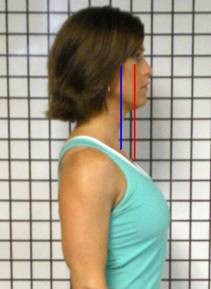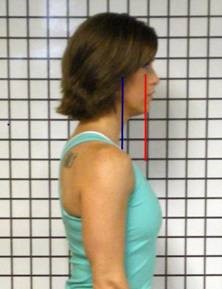Post-Surgical Chiropractic Care
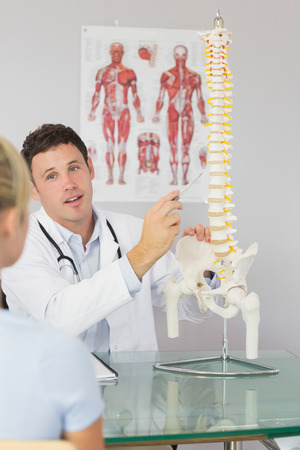
Clear Lake Chiropractor Comments: Frequently I get asked by patients if their spouse or friend could still get chiropractic care if they have had spinal surgery in the past. The answer is almost always yes, but I still need to explain how it won’t cause a problem.
Some people have had neck or back surgery with good results years ago and they want to make sure that chiropractic won’t cause the problem to reoccur. Depending on the type or surgery that was performed in the past, it will determine the current problems.
If the patient had a simple removal of the herniated disc (discectomy), opening up of the foramen where the nerve exits the spine (foraminotomy) or opening up of the back of the spine (laminectomy) then most of the problems will be due to scar tissue or lack of motion in the area of the prior surgery. The only discomfort that patients typically feel is some soreness from the scar tissue being broken up as mobility is increased.
If the patient had multiple levels of herniated disc he/she might have had surgery to stabilize their spine either with bone or with a metal cage (fusion). If the patient had scoliosis as a child he/she might have had a rod surgically implanted next to the spine. In both of these cases the area that is fused will not move. The pain is typically the area right above or below the fusion. The problem here is that these areas tend to move too much since the areas next to the fusion are trying to make up for the lack of motion in the fused areas. These patients typically do not feel much discomfort since the inflammation is being reduced. Patients might experience some soreness as we show them stretches and exercises to recruit other muscles in to use.
The hardest cases, but most rewarding, are the patients who have recently had spinal surgery with minimal or no relief of their pain. Until the surgeon has released the patient from care, we can only do therapy for the pain. After the patient has been cleared by the surgeon it is my job to determine what is actually causing the pain. This may or may not be the area where the surgery was performed. Depending on what is causing the pain will determine how it is corrected. Just because surgery was performed in the past does not prevent other treatment to the spine.
Dr. Ward Beecher practices at Beecher Chiropractic Clinic at 1001 Pineloch, Ste 700 Houston, TX 77062. You can schedule an appointment at BeecherChiropractic.com or by calling (281) 286-1300. If you have any questions regarding this blog, please comment below!
Understanding Sacroiliac (SI) Pain
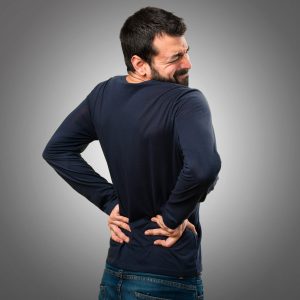
Clear Lake Chiropractor Comments: When most people come in to my office complaining of “hip” pain, they usually point to their sacroiliac (SI) joint. The SI joints are located right below your belt line above your buttocks. The SI joints are designed to help transition the weight from the spine to the pelvis. Additionally, sacroiliac joints are designed to allow a minimal amount of movement, and are reinforced with an interconnected network of strong ligaments and tendons.
Pain in the SI joints comes from either too much motion or not enough motion. There can be too much motion in the joint during pregnancy when the ligaments become relaxed to help with the birth or as a result of an injury. The most common injury that we see is when people are bending and twisting at the same time. This can either sprain the joint or allow the joint become subluxated or out of alignment. There can be not enough motion in the joint when it has become arthritic or has degenerated.
Typically SI joint pain will start in the joint and radiate out into the adjacent muscles. The SI joint can also send out a referred pain. The referred pain will go into the buttocks, around to the groin and possibly down the front of the thigh. It will not cause pain to go past the knee. That is a nerve pain.
The best treatment for SI pain is chiropractic care to make sure that the joint is in the correct alignment and not immobile, physical therapy to help with the pain and relax the muscles, stretches to make sure that the joint and associated muscles are moving correctly and therapeutic exercises to make sure that the joints are properly supported.
Dr. Ward Beecher practices at Beecher Chiropractic Clinic at 1001 Pineloch, Ste 700 Houston, TX 77062. You can schedule an appointment at BeecherChiropractic.com or by calling (281) 286-1300. If you have any questions regarding this blog, please comment below!
Safer Solutions to Opioids
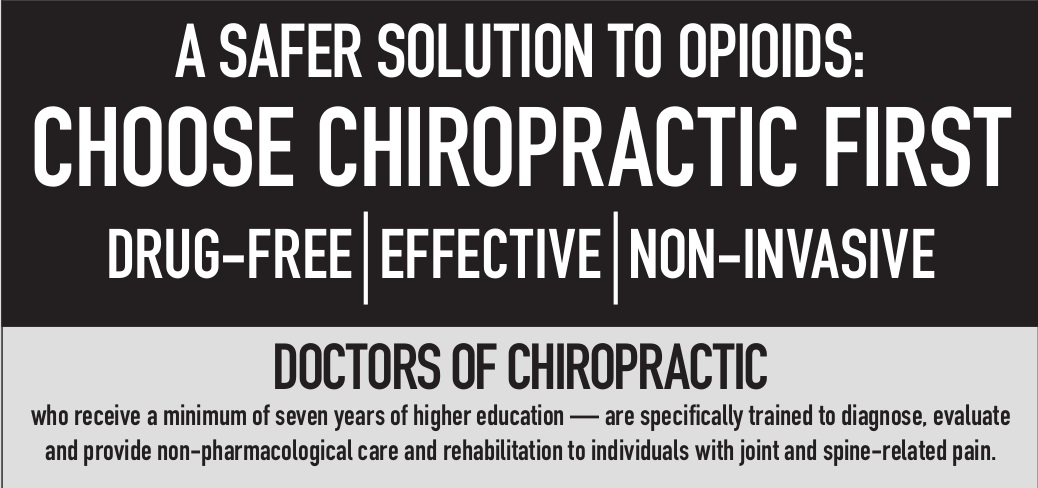
A safer solution to opioids: Choose Chiropractic First
Drug-Free | Effective | Non-Invasive
Doctors of Chiropractic who receive a minimum of seven years of higher education – are specifically trained to diagnose, evaluate and provide non-pharmacological care and rehabilitation to individuals with joint and spine-related pain.
What Are The Chiropractic Educational Requirements?
Clear Lake Chiropractor Comments: Have you ever wondered how many years your treating chiropractic doctor went to school for or how their education compares to that of other health care professionals? Knowing your doctor’s educational background and additional certifications is often essential to helping you choose the health care provider that is right for you. While the word “doctor” automatically implies an extensive academic curriculum, each health care specialist has a unique and individualized educational program to complete prior to practicing in the real world.
As with many professionals, the specific requirements outlined often vary from state to state. Typically, chiropractors are required to have completed undergraduate pre-medical studies and obtained a bachelor’s degree prior to admission to a post graduate chiropractic college. Each chiropractic college has undergone a meticulous evaluation process to become certified by the Department of Education as an accredited educational institution.
The amount of time that your chiropractic doctor spends at a specific chiropractic academic institution is impressive. In fact, your chiropractor has spent a minimum of 4,200 hours at a chiropractic college prior to receiving his diploma. This time is spent in the classroom, laboratory, and clinic learning about the various aspects of the chiropractic profession and health care in general.
In the classroom, your doctor focuses his studies on the subjects of anatomy, physiology, diagnosis, pathology, biochemistry, neuromuscular and orthopedic evaluation, pediatric and geriatric care, microbiology, nutrition, immunology, radiology, philosophy, and clinical research. While this may seem like a lot, all of this information is assimilated and tested prior to advancement to clinical work. Once the student has completed his academic work, he will typically spend a minimum of 1,000 hours at a campus clinic under the guidance of a clinic doctor. During this time he will learn hands on how to diagnosis and treat patients in real clinical situations.
During your chiropractors education they will be tested through a number of different evaluations. Not only is your doctor subject to evaluation by their chiropractic college, they must also pass a series of national board examinations. Chiropractors practicing in the United States are required to have passed a series of four national board exams which evaluate them on their understanding of the basic sciences, clinical sciences, physiological therapeutics, diagnostic imaging, case management, and clinical competency. In addition to these requirements, following graduation and completion of national board examinations, each chiropractor must become certified by their state licensing agency.
The completion of these standards is not the end of the educational journey for chiropractic doctors. Depending on the state, each chiropractor is required to complete additional approved course work at designated times following their licensure.
After reading the above information, I feel it is safe to say that your chiropractic doctor knows far more about your health than just treating your back. To help understand this it is useful to compare a chiropractor’s education to other members of the health care community. Since many people are familiar with a medical doctor, we will compare their educational background with that of a chiropractic doctor. For starters, the typical chiropractic student will have completed a total of approximately 2,419 hours of academic work prior to the initiation of clinical studies. In comparison, the majority of medical students will have completed somewhere around 2,047 hours of study. Further, while each health care discipline has its strengths, chiropractic students undergo more hours of study in the fields of anatomy, embryology, physiology, biochemistry, diagnosis, x-ray, and orthopedics. In contrast, medical practitioners have had more classroom hours studying the subjects of pathology, psychology, and obstetrics.
When analyzing these numbers it is important to understand that while differences exist, each of your doctors has undertaken and completed a similar core education. In addition, it is important to remember that each of your doctors (even in the same health care discipline) possess various strengths to compensate for other health care professionals’ weaknesses and utilize a different approach to healing the body. In the end, finding the doctor that understands your needs and has the tools to provide you with the most appropriate care is what is important.
Dr. Ward Beecher practices at Beecher Chiropractic Clinic at 1001 Pineloch, Ste 700 Houston, TX 77062. You can schedule an appointment at BeecherChiropractic.com or by calling (281) 286-1300. If you have any questions regarding this blog, please comment below!
When Back Pain Isn’t Caused By Your Back
Houston Chiropractor Comments: It seems odd when you say it, but sometimes back pain isn’t caused by your back. As a chiropractor, we are trained to determine the cause of someone’s back pain. This allows us to determine if the complaint is minor and can be handled out of the office with stretches and exercises, if it is a chiropractic problem that requires spinal adjustments and therapy or does the problem require medical attention. After being a chiropractor for 28 years I have seen many cases where the back pain wasn’t coming from the spine, but somewhere else.
One of the worst things that can be happening is that the patient is having an abdominal aortic aneurysm. Occasionally in individuals older than 60 with high blood pressure or genetic diseases, the aorta can stretch out and pain from this can refer to the back. The danger is that this vessel can rupture and may possibly need to be fixed surgically.
A more common cause is a gynecological problem such as endometriosis, ovarian cysts or a pelvic infection. It is important to get a thorough history of the patient’s cycles and activities to help rule this in or out.
Kidney infections are famous for referring pain to one side of the back near where the ribs meet the lower back. This is called costovertebral tenderness and is elicited by percussing at the lowest ribs along the side the spine. Severe pain in this region can be an indicator of a kidney infection.
Gall bladder attacks can also cause back pain. These attacks are typically a “crampy” type of pain occurring after a fatty meal that gets better and then worse.
Intestinal complaints such as ulcers and diverticulitis can also refer pain to the spine when the intestine becomes inflamed or irritated. A proper history and examination will help to determine if this is the cause.
Finally a pulled muscle from the ribs or abdomen can refer pain to the spine.
Dr. Ward Beecher practices at Beecher Chiropractic Clinic at 1001 Pineloch, Ste 700 Houston, TX 77062. You can schedule an appointment at BeecherChiropractic.com or by calling (281) 286-1300. If you have any questions regarding this blog, please comment below!
School Back Packs and Back Pain
Clear Lake Chiropractor Comments: Every year millions of children walk around with heavy school back packs filled with books and supplies. While this is a good way to carry their school materials, by using their back and shoulder muscles, the tendency is to place too much strain on their neck and back due to overloading the back pack. The back will compensate for any load applied to it for an extended period of time. A heavy weight carried in backpacks can:
- Distort the natural curves in the middle and lower backs, causing muscle strain and irritation to the spine joints and the rib cage
- Lead to rounding of the shoulders
- Cause a person to lean forward, reducing balance and making it easier to fall
This problem can be made worse by carrying the pack on just one shoulder. Doing this causes the body to adapt by causing the body to lean to the other side placing additional stress on the mid and lower back as well as their associated muscles. This can lead to the children having headaches, shoulder, neck and back pain as well as pain down the arms and legs.
There is not a consensus among doctors on the correct amount of weight that a child can carry or the perfect back pack design, but parents should use common sense in choosing the best back pack for your child.
Look for backpack design features that help reduce the chance of back pain:
- Lightweight material (canvas as opposed to leather)
- Two padded, wide (2-inches), adjustable shoulder straps on the backpack
- Padded back
- Individualized compartments
- Hip strap, waist belt, or frame to redistribute the weight of the backpack from the shoulders and back to the pelvis
- Wheels so that the backpack can be pulled rather than carried
- Consider using a separate bag for the child’s laptop or other heavier electronic items
Dr. Ward Beecher practices at Beecher Chiropractic Clinic at 1001 Pineloch, Ste 700 Houston, TX 77062. You can schedule an appointment at BeecherChiropractic.com or by calling (281) 286-1300. If you have any questions regarding this blog, please comment below!

Iliotibial Band Syndrome (ITBS)
Houston Chiropractor Comments: Periodically I will have patients who come in to the office with hip or knee pain that have not responded to typical medical care. X-rays or MRI’s do not show any degeneration of the joint or the cause of pain. Upon examination, it is determined that the pain is not coming from the joint, but instead it is originating in the iliotibial band (ITB).
The iliotibial band is a thickened portion of the tensor fascia latae (TFL) along its lateral aspect. The TFL attaches on the top of the pelvis and runs down the side of your leg to the knee. Pain is caused either from aggravation of the greater trochanteric bursa (for hip pain) or from rubbing on the outside of the knee joint (for knee pain).
Typically we see ITBS in patients who have increased their mileage in running, began using more stairs or being in a hilly area and in patients who are doing a lot of bike riding or spinning classes. The pain will increase with motion, either bending or straightening the leg out. Tenderness will be located along the outside of the thigh with the area above the knee usually the most tender.
The best treatment for ITBS is rest, ice, NASID’s, ultrasound, sports massage and rolling out the muscle with either a foam roller or rolling stick. The patient should also have their low back / pelvis, knee and ankle joints examined for alignment issues. Typically on patients with long standing ITBS the gait of the person has changed and the affected joints will need to be adjusted by a qualified chiropractor. After the problem has been addressed, the patient needs to keep the hip muscles stretched, strengthen the muscles on the outside of the hip and modify their training as to prevent a reoccurrence of the initial problem.
Dr. Ward Beecher practices at Beecher Chiropractic Clinic at 1001 Pineloch, Ste 700 Houston, TX 77062. You can schedule an appointment at BeecherChiropractic.com or by calling (281) 286-1300. If you have any questions regarding this blog, please comment below!
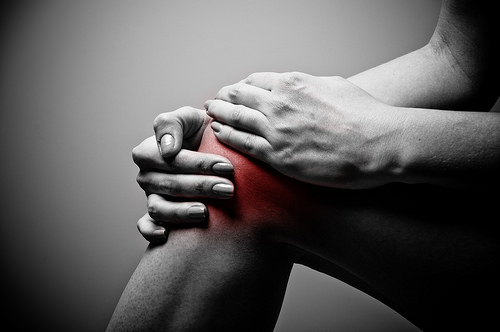
Things to Reduced Inflammation Quickly
Houston Area Chiropractor Comments: Every now and then, after care is completed, patients will say that they feel sore and achy in multiple muscles and joints even when not doing strenuous activity. While the most common culprit is dehydration, it can also be due the body being generally inflamed. Now this is a systemic inflammation, not an isolated swollen joint. Chronic inflammation can have negative effect on the body in numerous ways, and recent research has shown a link in chronic inflammation to obesity, diabetes, heart disease and even depression.
Chronic inflammation occurs when the immune system believes that it is under a constant threat, causing it to attack the body’s cells. Inflammation can damage the body and be a key culprit in weight gain. The body can benefit from the addition of foods that help to reduce inflammation. Some of these foods are leafy green vegetables, pineapple, blueberries, celery, walnuts, turmeric, ginger, cinnamon, garlic and chia seeds. While incorporating these foods into your diet, make sure to stay away from foods that cause inflammation, such as those containing sugar, artificial ingredients, chemicals, and gluten, for those who have gluten sensitivity.
Food isn’t the only way to help your body fight harmful inflammation. You can also avoid certain medications such as NASID’s, antacids and antibiotics. These medications can affect your gut and affect the way you digest food. Reduce toxin exposure by using safer natural products for cleaners, soaps and detergents. By being active regularly. You should try and do different activities every day. Studies have shown that by performing exercise for 2 ½ hours a week, it will reduce your chronic inflammation. You should try and get at least 15 minutes of sunshine daily. Vitamin D has been shown to help reduce inflammation. Getting enough sleep and a periodic massage will also benefit the reduction of inflammation.

Dr. Ward Beecher practices at Beecher Chiropractic Clinic at 1001 Pineloch, Ste 700 Houston, TX 77062. You can schedule an appointment at BeecherChiropractic.com or by calling (281) 286-1300. If you have any questions regarding this blog, please comment below!
Is Chiropractic Care Safe During Pregnancy?
Clear Lake City Chiropractor Comments: Recently we have had numerous patients asking me if it is safe for them to be adjusted while they are pregnant. After congratulating them on their good news, I tell them that there are no known contraindications to chiropractic care throughout pregnancy. Chiropractors are trained to work with women who are pregnant. The wellness of women who are pregnant or trying to conceive is a routine care for most chiropractors.
Now some people are wondering why a woman would need to be adjusted during their pregnancy. The simple answer is so that they can feel better. The better answer is that their body is changing at a rapid rate. Weight is being added and moved to different areas. This puts new strains on joints that the body isn’t use to. As the pregnancy progresses, the joints become looser to allow for delivery during the birth. By keeping the joints mobile, we can minimize the muscle discomfort and typically keep the mother moving and not needing any extended bed rest while making the ultimate delivery easier.
What is chiropractic care? Chiropractic care involves diagnosing spinal misalignments and correcting them by using the hands or instrument to manipulate, or adjust the spine, joints, and muscles. With pregnant women, chiropractors typically use gentler pressure than the more forceful manipulations that can be done on other adults.
There are other treatments if the child is presenting breach, such as the Webster Technique, but that will be another blog.
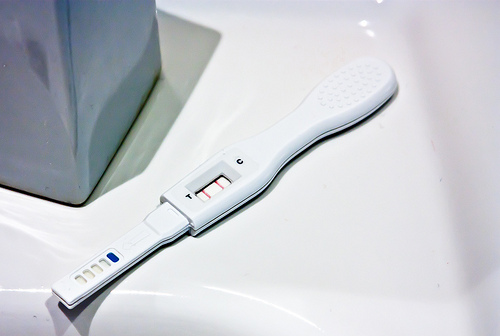
Dr. Ward Beecher practices at Beecher Chiropractic Clinic at 1001 Pineloch, Ste 700 Houston, TX 77062. You can schedule an appointment at BeecherChiropractic.com or by calling (281) 286-1300. If you have any questions regarding this blog, please comment below!
What exactly is “Good Head Posture?”
Clear Lake Chiropractor Comments: Have you ever noticed how many people have terrible posture? One of the most common faulty postures is called “forward head carriage” or “anterior based occiput.” Other terms are “hump back” or slouching. There are several reasons for this common postural fault. One is the weight of the head is, on average, approximately 10-13 pounds and if it’s positioned too far forwards, the muscles in the upper back and neck tighten up much more than normal, fatigue and become painful. Also, the muscles that attach to the skull have different degrees of strength. They also attach and pull at different angles, contributing to the common forward head carriage posture. The muscles of the chest are much stronger than those in the mid and upper back and tend to pull our shoulders forward. The following pictures offer a good view of both a faulty posture as well as a “good” posture. Notice the forward shift in the line in the pictures of poor posture and backwards shift in the good posture pictures.
As you can see, the weight of the head is back over the shoulders and the shoulder posture is appropriately positioned back in the image titled “Good Head Posture.”
It is important to understand correcting Forward Head Carriage takes time – in fact, it takes a minimum of 3 month before this becomes an automatic new “habit.” Of course, it could take longer or, completely fail if you are not very conscientious about constantly reminding yourself to position your posture as shown above in the “Good Head Posture” image (above). An exercise based on this posture correction technique is performed by retracting your chin / head as far back as you can and holding that position for 5-10 seconds. Doing this multiple times a day, between the time you maintain a partial chin tuck (“Good Head Posture”) position will further facilitate the posture retraining process.
If you, a family member or a friend require care, we sincerely appreciate the trust and confidence shown by choosing our service. We are proud that chiropractic care has consistently scored the highest level of satisfaction when compared to other forms of health care provision and we look forward in serving you and your family presently and in the future.
Dr. Ward Beecher practices at Beecher Chiropractic Clinic at 1001 Pineloch, Ste 700 Houston, TX 77062. You can schedule an appointment by calling (281) 286-1300. If you have any questions regarding this blog, please comment below!
